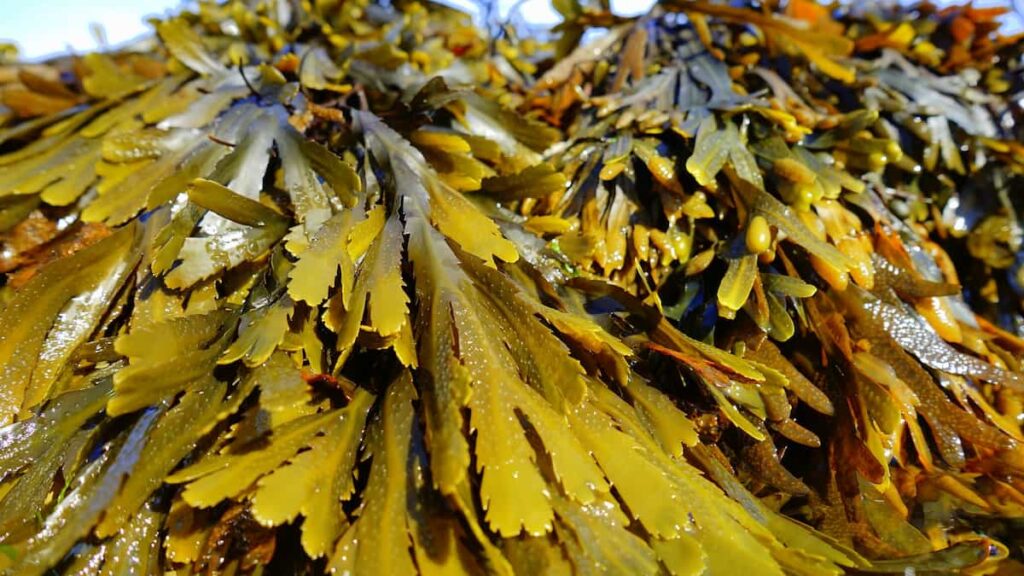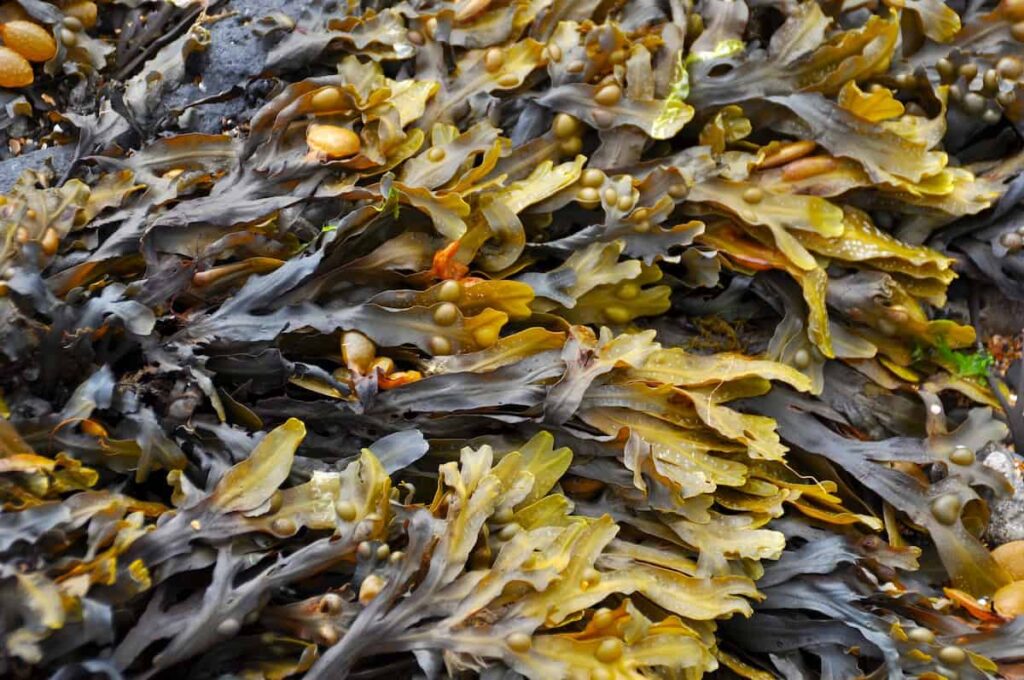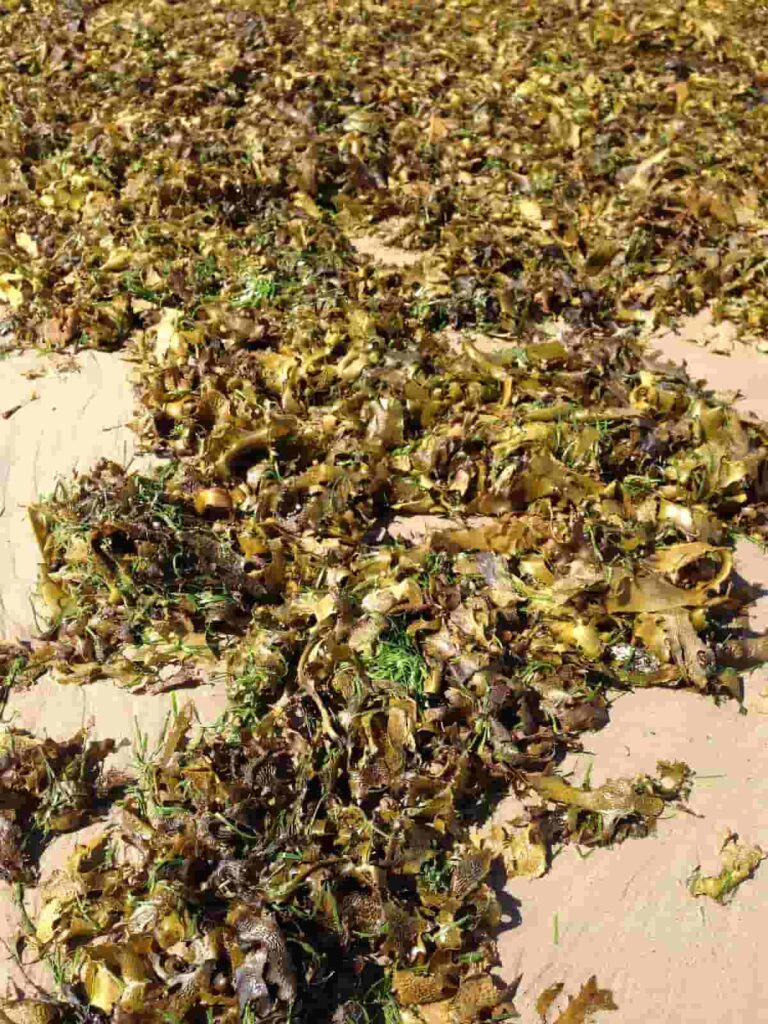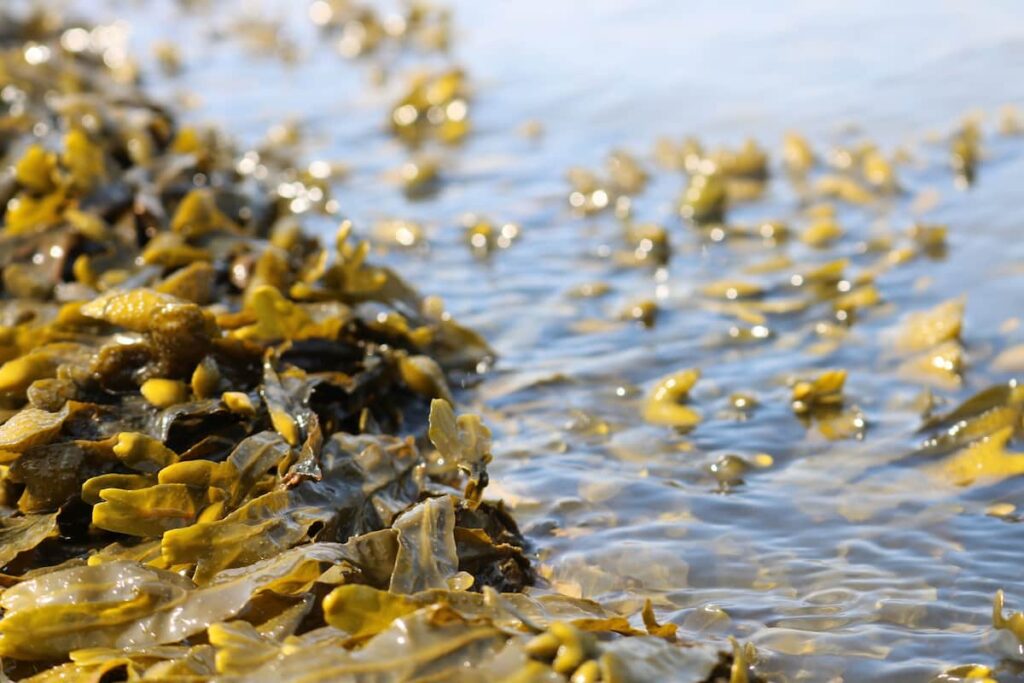Are you looking to get into the exciting world of seaweed farming? India is one of the major countries in the seaweed production industry, and there are many opportunities for those looking to get involved. Currently, many coastal areas in India are involved in cultivating seaweed. In this blog post, we’ll explore the current trends in seaweed farming in India, the benefits of this type of farming, the cost and profits associated with it, and some of the companies leading the way. So read on to learn more about this exciting industry!

How to start seaweed farming in India
What is seaweed farming?
Seaweed farming involves the cultivation of seaweed in offshore farms. Seaweed is an important source of food and biofuel and has several other uses. It is a fast-growing plant and can be harvested within a few months of planting. Seaweed farming is a relatively new industry in India, but it has been growing rapidly in recent years. The country has a long coastline and an enormous potential for seaweed cultivation. The Indian government has supported the industry and provided subsidies to farmers to encourage seaweed cultivation.
There are many benefits to seaweed farming. It is environmentally friendly and does not require chemical fertilizers or pesticides. It also provides employment opportunities in coastal areas. In addition, seaweed farming can help to mitigate climate change by sequestering carbon dioxide from the atmosphere. The cost of setting up a seaweed farm is relatively low, and profits can be high.
There are some challenges associated with seaweed farming, such as the risk of storms and waves damaging crops, but these can be mitigated with good planning and management. Several companies have started offering services to help farmers set up and manage their farms. These companies provide training, seedlings, and other support services. They also buy seaweed from farmers at market prices, which provide an additional income stream for farmers.
In case you missed it: Contract Fish Farming in India: Companies, Agreement, Profits, Process, Benefits, and Risks

The benefits of seaweed farming
Seaweed farming is an ancient practice used for centuries in Asia. It is now gaining popularity in other parts of the world, including India. Seaweed farming has many benefits, including:
Seaweed is a nutritious food source.
Seaweed is algae rich in nutrients, including vitamins, minerals, and antioxidants. It can be eaten fresh or dried and is often used as a seasoning or ingredient in Asian cuisine.
Seaweed farming supports coastal ecosystems.
Seaweed farms provide habitat and refuge for marine life, help control erosion, and filter the water pollutants and excess nutrients.
Seaweed farming can be profitable.
Seaweed farmers can sell their crops to restaurants, markets, or processors for use in cosmetics, fertilizers, and animal feed. Prices for seaweed vary depending on the market demand and type of seaweed, but it is typically more profitable than traditional crops such as rice or wheat.
Seaweed farming is sustainable.
Seaweed farms require no freshwater or land resources, and the plants naturally absorb carbon dioxide from the atmosphere—making seaweed farming a potential solution for mitigating climate change.
Seaweed farming technology
Seaweed farming technology is continuously developing to meet the demands of the ever-growing seaweed industry. The latest innovations in seaweed farming technology include automated systems for cultivating, harvesting, and processing seaweed. These systems help to improve yields and quality while reducing labor costs. With the increasing popularity of seaweed as a food ingredient, there is a growing demand for high-quality, sustainably-grown seaweed.
Farmers are turning to new technologies to help them produce larger quantities of higher-quality seaweed to meet the demand. One such technology is automated cultivation systems. These systems can control the environment in which the seaweed grows, ensuring optimal conditions for growth. This results in healthier plants and higher yields. Harvesting seaweed by hand can be a time-consuming and labor-intensive process.
In case you missed it: 21 Profitable Fruit Crops in India: Low-investment and High-returns

Automated harvesting systems can significantly speed up this process while reducing the risk of damage to the crop. Once the seaweed has been harvested, it needs to be processed before using as an ingredient in food or cosmetics products. Automated processing systems can clean and chop the seaweed more quickly and efficiently than manual methods, resulting in a higher-quality product.
The current trends in seaweed farming
The current trends in seaweed farming are toward more efficient and sustainable production methods. Seaweed farmers are moving away from the traditional method of using nets to cultivate seaweed, and instead, farmers are using long lines or ropes. This change is because nets can damage the delicate marine environment and long lines allow for a greater yield of seaweed per square meter.
Regarding sustainability, many farmers are now using solar panels to power their operations. This is especially common in areas without access to mains electricity. Solar power is much cleaner and more environmentally friendly than running generators, which produce harmful emissions. Another current trend in seaweed farming is the use of LED lights. These lights are used to stimulate growth in the algae, and they are much more efficient than traditional incandescent bulbs.
LEDs also have a much longer lifespan, representing a significant saving in replacement costs. Finally, there is an increasing focus on quality control in the seaweed industry. Seaweed farmers are working to ensure that their products meet stringent international standards to attract buyers worldwide. In particular, there is a demand for organic seaweed, which is free from pesticides and other harmful chemicals.
The cost of seaweed farming in India
Seaweed farming in India is a comparatively new industry, with the first farms appearing in the late 1990s. The industry is still in its early stages, and there is no reliable data on the cost of seaweed farming in India. However, we can make some generalizations based on the cost of seaweed farming in other countries. Seaweed farming requires very little in terms of infrastructure or inputs, and the main costs are labor and transportation.
In India, labor costs are relatively low, and transportation costs are also relatively low thanks to the country’s large coastline. As a result, the cost of seaweed farming in India is likely to be lower than the cost of seaweed farming in other countries. The Indian government is supportive of the development of the seaweed industry, and has provided subsidies and tax breaks to encourage farmers to get involved. As a result, the cost of seaweed farming in India is likely to continue to fall as the industry develops.
The profits of seaweed farming
Seaweed farming is a process of cultivation of seaweeds in the open sea. It requires negligible input cost and has high output potential. The two main benefits of seaweed farming are: first, it provides an additional source of income for coastal communities; and second, it helps to protect the coastline from erosion.
The global seaweed market was valued at $6.4 billion in 2016, and this seaweed market is looking forward to grow at a CAGR of about 7% from 2017 to 2025. The Asia-Pacific region accounts for more than 60% of the global demand for seaweed, accounting for more than 60% of the global demand. India is one of the world’s major producers and exporters of seaweed. The current trend of seaweed farming in India is towards large-scale commercial production by private companies.
In case you missed it: Plant Growth Regulators in Agriculture and Horticulture: How to Use for Higher Yields and Benefits

Several factors make seaweed farming a profitable venture in India:
- The country has a long coastline with suitable conditions for cultivation.
- There is a growing demand for seaweed-based products in domestic and international markets.
- The government is providing various incentives to encourage investment in this sector.
- As a result, many private companies are investing in this sector.
The cost of starting a seaweed farm in India depends on various factors such as location, type of facility, the scale of production, etc. Generally, the investment required for setting up a small-scale seaweed farm is around Rs 2 lakhs.
Seaweed farming process
In India, seaweed farming is a relatively new industry with immense potential. Many species of seaweed can be farmed, each with its benefits and uses. The process of seaweed farming is quite simple and requires minimal input. Seaweeds are generally propagated through cuttings or spores. Cuttings are small pieces of existing seaweed plants used to start new ones. Spores are tiny reproductive cells that can be used to grow new plants. Seaweed farmers typically use one or two species of seaweed for mass production.
The seaweed plant is then harvested and dried for use. Seaweed can be used for various purposes, such as food, cosmetics, fertilizers, and biofuel. In India, seaweed is mainly used as manure for crops like rice and maize. It is also used in some traditional medicines. Seaweed farming in India has many benefits and is considered a renewable resource that can be grown quickly and easily with minimal inputs.
It does not require fresh water or land and can be grown in saline water near the coast. Seaweed farming can also help to mitigate climate change by absorbing carbon dioxide from the atmosphere. A few companies in India are already involved in seaweed farming, but the industry is still in its early stages. The cost of setting up a small-scale seaweed farm is relatively low.
The companies involved in seaweed farming
In India, many companies are involved in seaweed farming. These companies have provided the necessary infrastructure and support to farmers who want to start seaweed cultivation business. Some of the well-known companies involved in seaweed farming in India are:
- Aquatic Foods Pvt. Ltd.: They are one of India’s leading seaweed processors and exporters, with over 25 years of experience in the industry. They have their own seaweed farms and source them from other independent farmers.
- Indian Seaweed Products Pvt. Ltd.: They are another major player in the industry with over three decades of experience. They also have their seaweed farms and procure them from other farmers.
- Oceanic Organics Pvt. Ltd.: This is a relatively new entrant into the industry but has made a mark for itself with its innovative products and sustainable farming practices.
- Atlantic Sea Farms Pvt. Ltd.: Another new player in the industry, they focus on organic and sustainable seaweed farming practices.
In case you missed it: Shrimp Contract Farming in India: Companies, Agreement, Process, Profits, Benefits, and Risks

Seaweed cultivation training in India
Seaweed cultivation is an ancient practice in many parts of the world and is currently enjoying resurgence in popularity. India is no exception, with seaweed farming becoming increasingly popular recently. There are several reasons for this; including seaweed cultivation can have several positive environmental impacts. In addition to its positive environmental impacts, seaweed farming can also be profitable. The global seaweed market is expected to grow from $6.4 billion in 2020 to $8.6 billion by 2025 at a CAGR of 5.8%.
This growth is driven by factors such as the increasing popularity of seaweed-based products and the growing awareness of the health benefits of seaweed consumption. As a result, several companies are operating in the Indian seaweed farming space, including Earth2Ocean, Aquagri Tech, and Indo Sea Farms. These companies offer various services, including training courses on cultivating seaweed.
Seaweed farming in Tamilnadu, Kerala, Goa, and Andhra Pradesh
In India, seaweed farming is practiced in the coastal states of Goa, Kerala, Tamil Nadu, and Andhra Pradesh. The majority of seaweed farms in India are located in the state of Tamil Nadu, on the country’s east coast. Seaweed farming in Goa is done mainly in the shallow waters off the coast. The main species cultivated are Kappaphycus alvarezii and Eucheuma denticulatum. Seaweed farming in Goa started in the early 1990s with the introduction of Kappaphycus alvarezii.
This species was initially propagated using wild seeds collected from the Andaman and Nicobar Islands. The farming of this species was later expanded to other parts of India, including Tamil Nadu, Kerala, and Andhra Pradesh. Eucheuma denticulatum was introduced in India in the late 1990s. This species is native to the Indo-Pacific region and is widely cultivated in Indonesia, the Philippines, and Thailand. In India, it is grown mainly in Tamil Nadu and Kerala.
Both Kappaphycus alvarezii and Eucheuma denticulatum are harvested for their carrageenan content. Carrageenan is a natural polysaccharide used as a food additive and thickener. It is also used in the cosmetics and pharmaceutical industries. In India, seaweed farming is done mainly using traditional methods.
Seeds are collected from the wild and then sown on nets or ropes in the shallow waters off the coast. The state governments have been promoting seaweed farming and providing financial assistance to farmers. In addition, the government has developed a Seaweed Management Plan that includes measures to protect seaweed farms from climate change and other threats.
Seaweed farming subsidy in India
The Indian government has recently announced a subsidy for seaweed farmers in the country. This is a positive step towards promoting seaweed farming in India. Seaweed farming is a process of cultivating and harvesting seaweed from the ocean. It is a sustainable and environmentally friendly activity that can provide income for coastal communities.
In case you missed it: How to Grow Custard Apple in Pots: Soil, Propagation, Planting, and Care

The subsidy will be provided to those registered with the National Fishermen’s Federation (NFF) who has a minimum of 2 hectares of seaweed cultivation area. It will be disbursed through the National Seaweed Development Board (NSDB). The amount of subsidy will be based on the type of seaweed cultivated, with a maximum subsidy of Rs. 2 lakhs per hectare per year. This will help to offset the costs of seed, fertilizer, labour, and other inputs required for seaweed cultivation. This is a welcome move by the government which will help to boost the growth of the seaweed farming industry in India.
Seaweed processing plant in India
Seaweed Processing Plant in India is one of the world’s leading seaweed producers, with a production capacity of more than 1.5 million tonnes per year. The country’s seaweed industry is worth an estimated $600 million and employs more than 200,000 people. Most of India’s seaweed is harvested from the Gulf of Mannar, located between India and Sri Lanka. The Gulf of Mannar is home to more than 3,000 species of marine life, including over 1,200 species of coral. Seaweed is harvested by hand from the shallow waters of the Gulf of Mannar.
It is then transported to processing plants, where it is dried, sorted, and processed into various products. These products include agar-agar (a gelatinous substance used in food processing), carrageenan (used as a food additive and thickener), alginate (used in textile printing and dyeing), and iodine (used in the production of animal feed and fertilizers). Seaweed processing is an important industry in India, providing employment and income for many coastal communities. It also plays a vital role in the country’s economy, contributing to the export earnings of seaweed-based products.
Conclusion
If you’re considering starting a seaweed farm in India, now is a great time to start. There are many benefits to seaweed farming, including the fact that it can help improve water quality and provide a source of income for coastal communities. The cost of starting a seaweed farm is relatively low, and there is high demand for seaweed products in India.
With proper planning and execution, you can start a successful seaweed farm in India that will provide you with a good income. If you live in the following states and plan to start seaweed farming in India, this article will help you understand the current trend in the cultivation of seaweed, the companies involved, profits, costs, and subsidies from the government of India.
| Andhra Pradesh | Karnataka |
| Arunachal Pradesh | Kerala |
| Assam | Madhya Pradesh |
| Bihar | Maharashtra |
| Chhattisgarh | Manipur |
| Goa | Meghalaya |
| Gujarat | Mizoram |
| Central India | South India |
| Haryana | Sikkim |
| Himachal Pradesh | Tamil Nadu |
| Jharkhand | Telangana |
| Nagaland | Tripura |
| Odisha | Uttar Pradesh |
| Punjab | Uttarakhand |
| Rajasthan | West Bengal |
| North India | West India |
- Aquaponic Farming at Home: A Step-By-Step Guide
- Profitable Village Farming Business Ideas in 2024
- High-Yield Aquaculture: Fast-Growing Fish for Farming
- Effective Fish Pond Construction Techniques for Beginners
- Irrigation and Water Management in Pineapple Farming
- Blossom to Harvest: Mastering Flowering and Pollination in Papaya Farming
- Pig Fattening Essentials: From Selection to Sale for Beginners
- Raising Wagyu Cattle: A Complete Guide for Premium Beef Production
- Soil Types and Their Water Holding Capacity
- Optimizing Irrigation Schedules for Coconut Groves for Enhanced Yield
- Espresso Your Garden: Coffee Grounds for Healthier Acid-Loving Plants
- The Best Soil Mix for Snake Plants: How to Mix Your Own Snake Plant Soil
- Green Thumb Success: Expert Tips for Cultivating Greenhouse Beans All Year Round
- Bloom All Year Round: The Ultimate Guide to Indoor Hyacinth Care
- Eco-Friendly Gardening: How to Make Liquid Fertilizer from Kitchen Waste
- Ultimate Guide to Grow Anise in Pots: Explore Seed Propagation to Harvesting
- Guide to Raising Chester White Pigs: Discover Breed Facts to Growth Management
- Mastering the Elegance: The Ultimate Guide to Weeping Cherry Tree Care, Planting, and Maintenance
- Ultimate Guide to Planting Garlic in Grow Bags: Growing Strategies for Beginners
- How to Fix Spider Plant Leaf-Related Problems: Natural and Organic Remedies
- 10 Reasons Why Your Tulsi Plant is Shedding Leaves: Home Remedies and Solutions
- Optimizing Growth and Yield: The Advantages of Palm Bunch Ash Fertilizer
- Utilizing Neem Oil Extract as a Natural Pesticide for Hydrangea
- From Soil to Harvest: Various Ways in Which Farmers Can Use AI Tools
- Steps to Encourage and Induce Citrus Flowers: A Comprehensive Guide
- How to Fix Snake Plant Leaf-Related Issues: Natural and Organic Remedies
- Transform Your Garden into a Fragrant Oasis with Raat Ki Rani (Night Blooming Jasmine)
- Discover the Ideal Chicken Breeds for Philippine Farms
- How to Create a Poultry Egg Farm Business Plan for Profits
- Grow Lemon Cucumbers Like a Pro: Insider Techniques for Bountiful Yields
- Ultimate Guide to Caring for Your Pink Princess Philodendron: Tips for Thriving Variegation
- Areca Nut Profit Per Acre: Calculating Yield and Cost of Cultivation
- How Kaveri Chicken is Becoming a More Profitable Breed in Indian Backyards
- Transform Your Barn: 9 Steps to Convert a Horse Stall into a Chicken Coop
- Exploring Suffolk Sheep Disadvantages with Limitations and Challenges
- Guide to Solving Potted Lemon Tree Problems: How to Revive Lemon Tree in Containers
